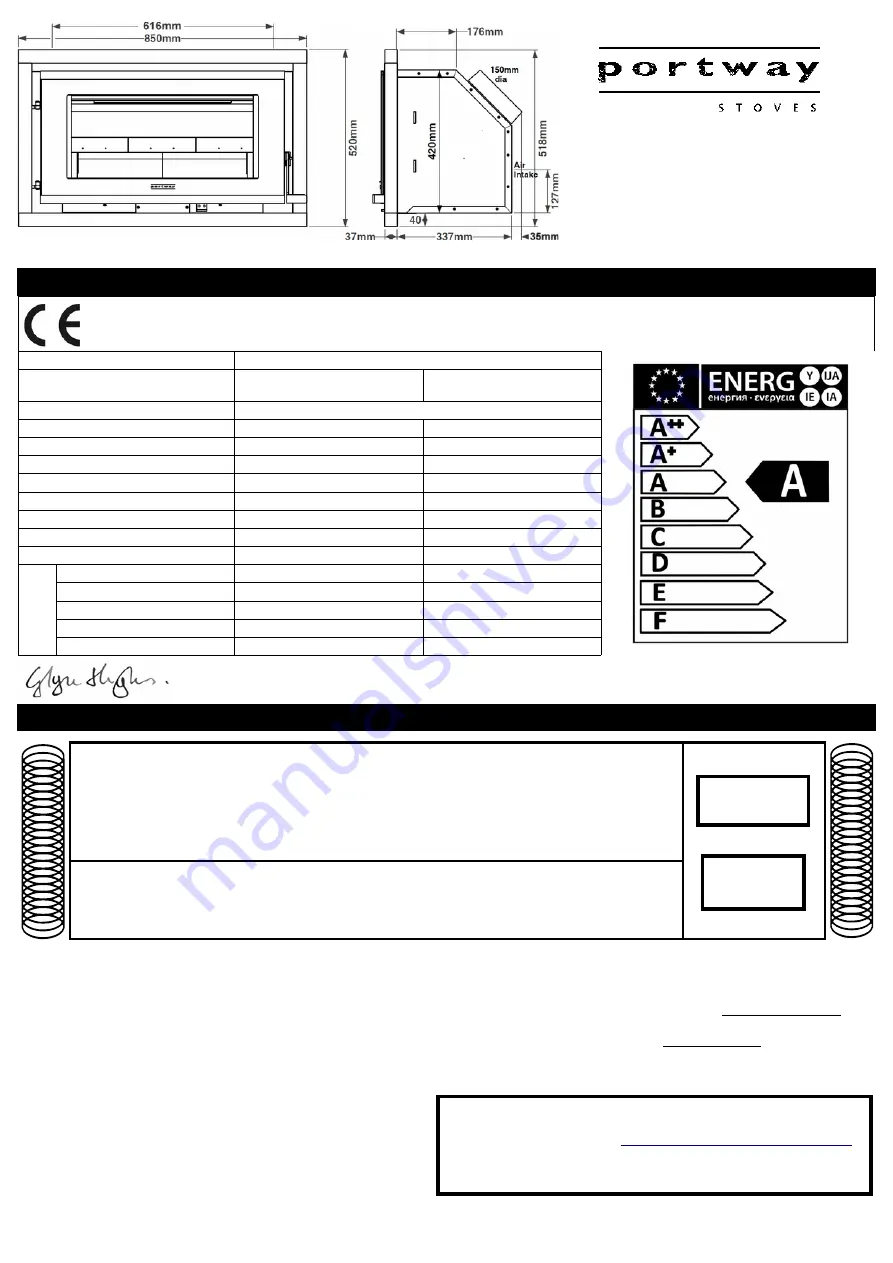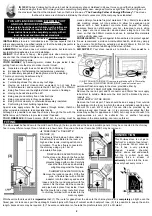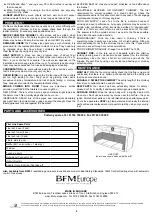
Solid Fuel Stoves Manual v4. Issued - 28/11/2017 (469)
'PANORAMIC'
HIGH-PERFORMANCE
WOOD-FIRED
INSET CONVECTOR STOVES
INSTALLATION AND OPERATING INSTRUCTIONS
LEAVE THIS DOCUMENT WITH THE HOUSEHOLDER!
All Portway Stoves exceed the safety and performance requirements of European Standards
Intermittent burning solid fuel roomheaters for installation with a single dedicated chimney.
Portway Panoramic
Fuel
Wood logs (Beech) with standard
firebox
Wood logs (Beech) with reduced
firebox
Test Standard
EN 13229
Test Cycle
1.35kg over 0.75hr
0.88 kg over 0.75hr
Settings
70% open
50% open
Flue Draught Pa (ins WG)
12 (0.05)
12 (0.05)
Efficiency %
74.4
80.5
Recommended Output Rating kW
6.9 kW
4.9kW
Mean Flue Gas Temp Rise ºC
240 °C
190 °C
Minimum room air entry requirement
4000 mm²
2700 mm²
Minimum Clearance to combustibles
Sides 100mm, above 350mm
Sides 100mm, above 350mm
E
m
is
si
o
n
s
a
s
if
02
=
1
3
%
NOx mg/m³
-
-
CO %
0.46
0.25
CxHy mg/m³
-
-
Gas flow g/sec
7.5
5.0
Smoke Emission mg/m³
179
20
I declare that this information is true, these products meet the requirements of Harmonised Standards and are fit for sale. Signed on
behalf of the manufacturer by Glyn Hughes, Design Engineer, at Winster, Derbyshire, England 28. Nov. 2017
Read these instructions! Use only Dry Wood Logs!
This document, when completed by the installer, constitutes part of a 'Hearth Notice' for purposes of Building
Law. It must be left with the householder and placed where it can easily be found.
INSTALLED AT LOCATION:
BY:
EMERGENCY CONTACT:
Flue Draught measured
on commissioning:
Fuel used on
commissioning
I definitively assert that this installation is safe, has been lit and demonstrated to the householder,
conforms with current building regulations and with these instructions
SIGNED: DATE:
TO FIND A QUALIFIED INSTALLER, FUEL SUPPLIER or CHIMNEY
SWEEP, CONTACT:
UK:
The Solid Fuel Association, 7 Swanwick Court, Alfreton,
Derbyshire DE55 7AS Tel:0845-601-4406 www.solidfuel.co.uk
RoI:
Irish Nationwide Fireplace Organisation, 162 Capel Street, Dublin
1 Tel:01-801-5959 www.fireplace.ie
This stove may be used in smoke control areas when operated
strictly in accordance with these instructions and with Soliftec
Smoke Advice Sheet No1 (
www.soliftec.com/smokeadvice.htm
when burning:
UK:
Untreated wood logs (Exempted from s20 of the Clean Air Act 1993)
RoI:
Wood logs (Control of Atmospheric Pollution Regulations, 1970)
1
Pa
WG
PRODUCTION NUMBER






















